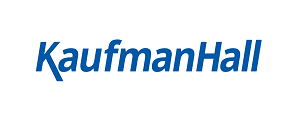How Scripps Health used demand modeling to prepare for the pandemic’s uncertainties
One year into the COVID-19 pandemic, health system leaders continue to confront an extremely volatile operating environment. Effectively responding to the financial and operational shocks caused by the pandemic requires a deep understanding of the factors that influence current and future demand, from multiple waves of COVID-19 infections and hospitalizations to fluctuating interest in other healthcare services from wary consumers.
Prior to the pandemic, San Diego, California-based Scripps Health was already employing a quarterly rolling forecasting approach, after moving away from traditional annual budgeting in 2018. But while rolling forecasting helped better prepare Scripps for the turmoil of the pandemic’s early days, system leaders soon realized they needed more granular information to model future demand and guide decision-making. Scripps has since added a series of new volume-related inputs to their rolling forecasts, including insights on the state of the local economy, surveys on consumers’ willingness to return to healthcare facilities, and even cellular phone data to better understand local mobility trends.
In this Q&A with Kaufman Hall, Loucas Koutoufidis, corporate vice president and controller for Scripps Health, and John Wong, the health system’s director of corporate financial planning and reporting, discuss how Scripps has employed emerging demand modeling techniques to realize the full power of rolling forecasting in unprecedented times.
Kaufman Hall: Why did Scripps Health first decide to adopt rolling forecasting?
Loucas Koutoufidis: An annual budget is already outdated the moment you create it. Given all of the fluctuations in the market, contracting and the broader economy, there’s so much going on that can derail your budget. You end up spending the rest of the year explaining variances, rather than really trying to understand where you’re going to end up in that fiscal year and the next year. It made all the sense in the world to become more flexible and to be able to change assumptions every quarter. It’s just like driving. If you have detours along the road, how are you going to get to your final destination if you can only stick to one path?
KH: How did the rolling forecasts help you respond during the initial shock of the pandemic?
Koutoufidis: When you see a 40% decline in your revenue in one quarter and someone asks you for a forecast — if we didn’t have this capability in place, we wouldn’t have been able to give them anything in a short space of time. Rolling forecasting gave us an advantage over other organizations, that were starting from scratch and perhaps creating things in Excel. We could immediately slice and dice our assumptions — for instance, reducing volumes in our elective surgery forecasts and increasing ED and ICU volumes.
John Wong: By the time the pandemic hit, people were already familiar with the quarterly process, and we knew exactly what we needed to do to add the needed assumptions. Our old budget processes would never have worked.
KH: What led to the decision to refine the forecast to better model demand?
Koutoufidis: We realized at the beginning of the pandemic that we needed more information to properly forecast our volumes — knowledge of the local economy, the local marketplace, infection rates and various other factors. It’s added a lot of expertise to the front end of our forecast, which drives pretty much everything. Through that iterative process, we’ve all learned a lot. I think our senior leadership has a lot more faith in the forecast and understands how we arrived at our assumptions for all of our different forecast groups and service lines.
Wong: The tool we were using to forecast before relied pretty heavily on history to project forward. After that first quarter of the pandemic’s impact, we realized we couldn’t use that, given that the drops in volumes and EBIDTA were all over the place. We needed to turn to something else that could help us figure out how low is this going to go, what’s the recovery and what’s the timing? At the time, we didn’t have our arms around pandemic modeling. We realized we couldn’t use the history anymore, and that we needed something to help us with our assumptions about the near and long-term impacts. The demand modeling exercise helped us develop high and low scenarios of where we might land, plan what could happen and identify what we could do to mitigate that and land somewhere that made sense.
KH: How did the insights from the new inputs inform decisions to mitigate the impact of the pandemic?
Wong: There are areas of our business that are more susceptible to changes in volume. For instance, we had to close a few clinics and shut down some services. By building those assumptions into the forecast, it helped us understand the elasticity of the results and the volume, and how big of an impact those volume changes have. These are things that we never would have normally done in a forecast, but it really showed us how the business can align itself. We could say, ‘”We need to absolutely keep these tier 1 services going, while perhaps we can close or delay these tier 3 and 4 services.” It also gave us a better picture of when the right time might be to bring back services and transition toward a recovery.






